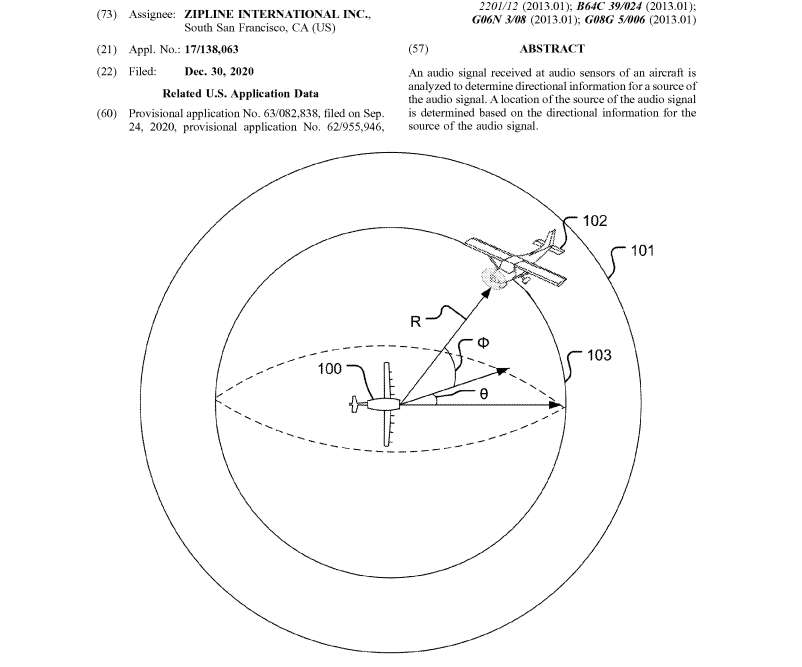“…Ever pushing Ziplines sense and avoid system uses sound to hear and get out of the way. Love their work.
Conventional aircraft detection systems, such as radar, may be difficult or cost-prohibitive to incorporate into smaller aircraft, such as unmanned aircraft. Further, regulations may require unmanned aircraft to maintain a spherical detection zone, detecting other aircraft in every direction relative to the aircraft. As conventional aircraft detection systems may not be developed for such detection, implementing conventional systems for spherical detection may be technically complex and expensive.
Conventional aircraft, including commercial aircraft and general aviation aircraft, follow established airspace rules to avoid collision with other aircraft. For example, in general, each aircraft is responsible for the airspace in front of the aircraft. In some airspaces, unmanned aerial vehicles (UAVs) may be required to maintain spherical coverage, meaning that the UAV must monitor airspace in each direction for intruding aircraft. Further, UAVs may be responsible for moving out of the way of intruding aircraft, so that other aircraft do not encounter UAVs during flight. Conventional aircraft detection systems, such as radar, may be optimized for monitoring the area in front of an aircraft such that detection may be poor for obstructions or objects close to the ground, such as hills. While such systems may be altered to provide spherical coverage, a system providing such coverage may prohibitively heavy relative to a UAV. Further, conventional detection systems may have difficulty with long-range detection, which gives a UAV less time to detect other aircraft and alter its flight path to avoid other aircraft…”
